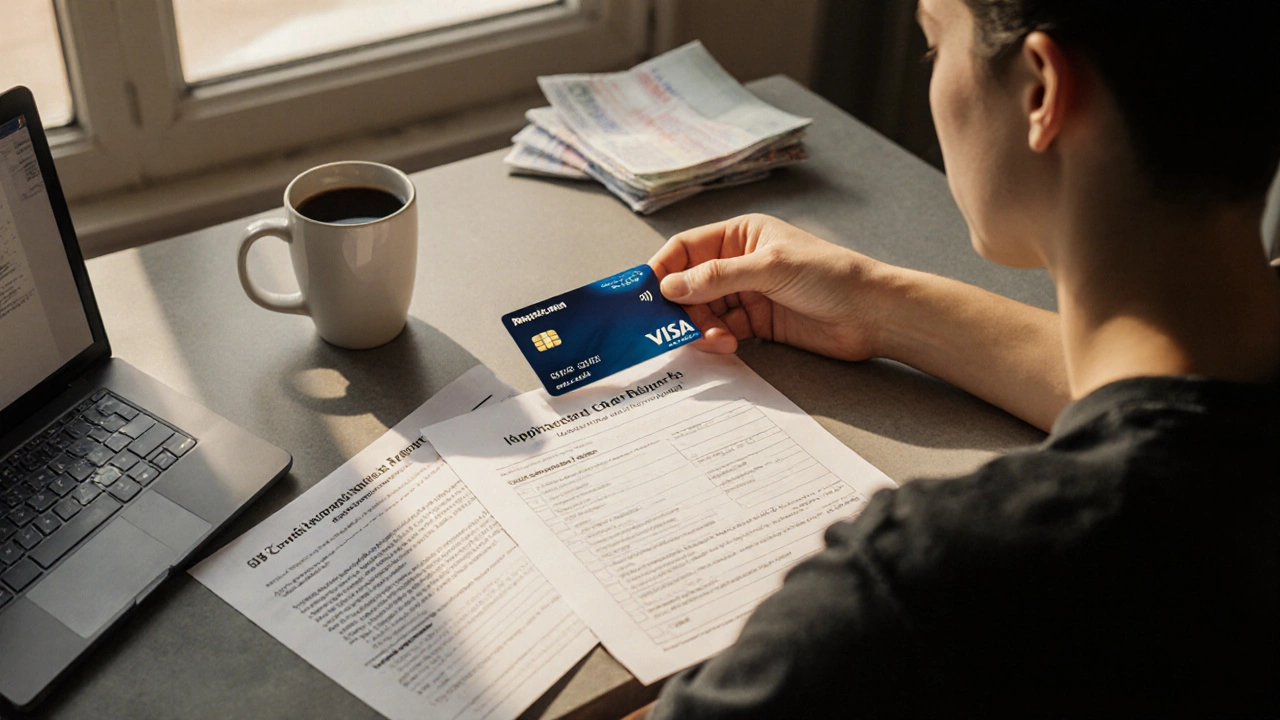
Credit Utilization Calculator for Bad Credit Cards
Calculate Your Credit Utilization
Keep your credit utilization below 30% (or $600 on a $2,000 limit) to build credit responsibly.
Credit Utilization
On your $2,000 limit card
Key Takeaways
- Several unsecured and secured cards still grant a $2,000 limit even if your score is below 600.
- Look for low APR, no annual fee, and a clear path to higher limits as you improve credit.
- Apply with the issuer that matches your residency: US banks for USD cards, Australian banks for AUD equivalents.
- Prepare a short checklist before you hit submit - proof of income, ID, and a recent address bill.
- Use the card responsibly: keep utilization under 30% and pay on time to watch the limit grow.
When you’re stuck with a low credit score, finding a Bad credit credit card is a type of credit card designed for consumers with credit scores below 600, offering more lenient approval criteria while often limiting credit line that still provides a usable limit can feel impossible. The good news? In 2025 a handful of issuers still start new accounts around a $2,000 credit line - enough to cover emergencies without instantly maxing out.
Why $2,000 Matters for Bad Credit
A $2,000 limit serves three practical purposes. First, it gives you breathing room to keep your utilization below the magic 30% threshold (bad credit credit card users often hover around $600‑$800 usage). Second, it signals to credit reporting agencies that you can handle a modest amount of revolving debt. Third, many issuers automatically review your account after six months and may raise the limit if you’ve paid on time.
Understanding Bad Credit and Credit Limits
Credit scores in the United States range from 300 to 850; in Australia, the range is similar but the scoring models differ slightly. Scores below 600 (US) or below 550 (AU) are generally classified as “bad credit.” Lenders compensate for the higher risk by capping the initial credit line, often between $500 and $2,500.
Two main card families dominate this space:
- Secured credit cards - you deposit cash that becomes your credit limit.
- Unsecured credit cards for bad credit - no deposit, but the issuer starts you at a lower limit.
Both can start at $2,000, but the unsecured options tend to have higher annual percentage rate (APR) and may charge a modest annual fee.
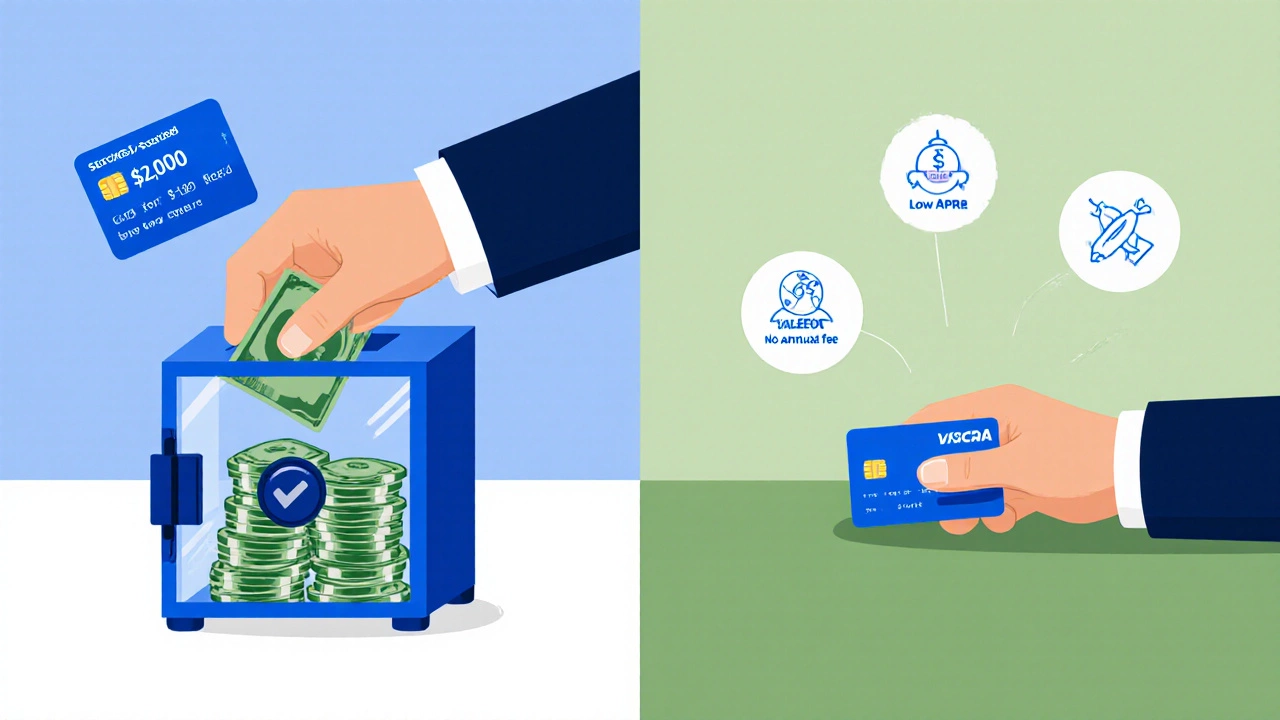
What to Look for in a ,000 Limit Card
- APR and fees. Aim for an APR under 24% and no annual fee during the first year.
- Credit limit bump policy. Some issuers promise a limit increase after 6‑12 months of on‑time payments.
- Reporting to bureaus. Ensure the card reports to Experian, Equifax, and TransUnion (US) or Equifax, illion, and Experian (AU) so you can build credit.
- Reward structure. Even low‑risk cards may offer cash‑back on groceries or gas - a nice perk if you stay within the limit.
- Balance transfer options. If you have existing high‑interest debt, a 0% intro balance transfer period can save money.
Top Cards Offering Around $2,000 for Bad Credit (2025)
| Issuer | Card Name | Initial Limit | APR (Variable) | Annual Fee | Key Feature |
|---|---|---|---|---|---|
| Capital One | Capital One Platinum | $2,000 | 26.99% | $0 | Automatic limit reviews after 6 months |
| Discover | Discover it® Secured | $2,000 (deposit‑backed) | 22.99% | $0 | Cash‑back on rotating categories |
| Citi | Citi® Secured Mastercard | $2,000 (deposit‑backed) | 23.49% | $0 | Reports to all three US bureaus |
| ANZ | ANZ Low Rate Credit Card | AUD 2,000 | 20.99% (variable) | AUD 0 first year | Low‑rate for everyday purchases |
| St. George Bank | St. George Low Rate Credit Card | AUD 2,000 | 21.49% | AUD 0 | Free from day one, limit increase after 6 months |
| OpenBank (Australia) | OpenBank Credit Card | AUD 2,000 | 22.95% | AUD 39 (waived first year) | Offers travel insurance on the card |
How to Boost Your $2,000 Limit Over Time
Getting a $2,000 limit is just the start. Here’s a step‑by‑step plan to push it higher:
- Pay the full balance each month - zero interest, lower risk.
- Keep utilization under 30% (roughly $600 on a $2,000 limit).
- Set up automatic payments to avoid missed due dates.
- Ask for a limit increase after six months of perfect payment history.
- If the issuer denies, consider a second card with a similar limit to spread out usage.
Every on‑time payment sends a positive signal to the credit reporting agencies, gradually nudging your score upward. As your score climbs above 650, many issuers will auto‑upgrade you to a $5,000‑plus limit.
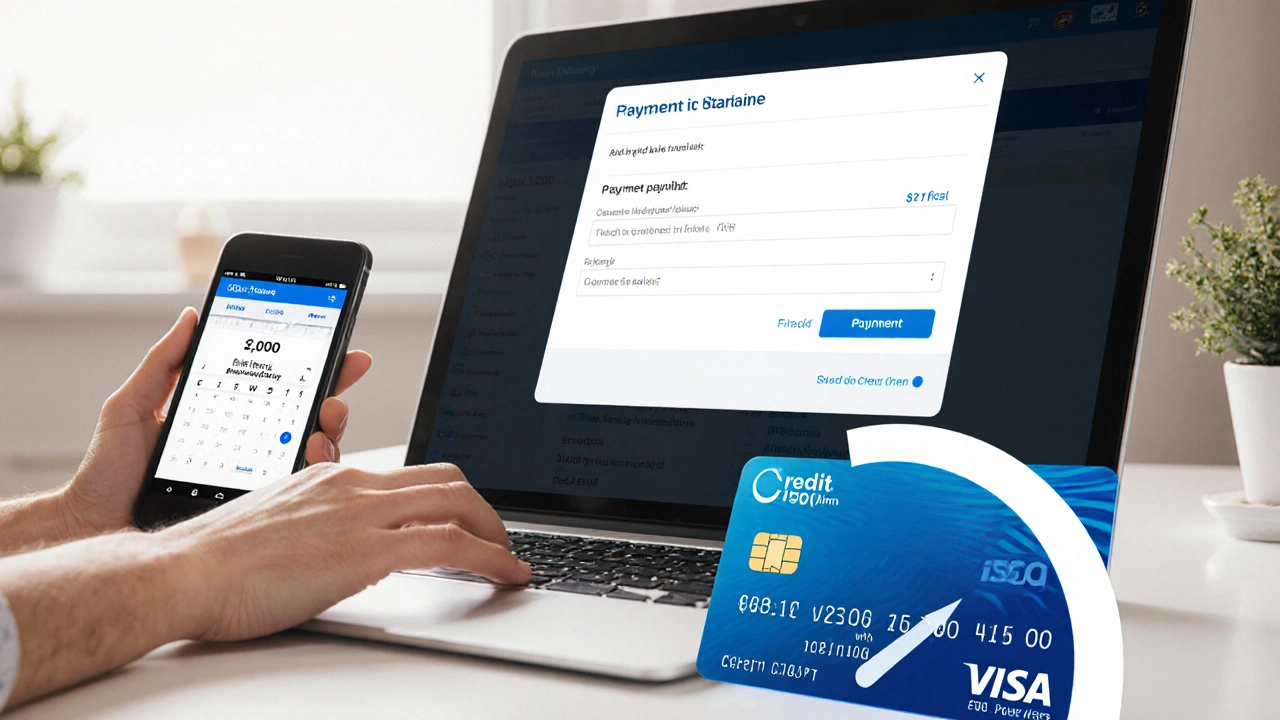
Common Pitfalls & How to Avoid Them
- Chasing the highest limit. A $10,000 limit sounds great, but if you can’t manage it, your credit score will tank.
- Missing a single payment. For bad‑credit cards, a missed payment can increase APR by up to 5% and trigger a limit freeze.
- Opening too many cards at once. Each hard inquiry drops your score by 5‑10 points; space applications at least six weeks apart.
- Using the card for cash advances. Cash‑advance fees can be $30‑$50 plus a higher APR, eating any reward you earn.
Application Checklist - What You’ll Need
Before you click “Apply,” gather these items to keep the process smooth:
- Valid government ID (driver’s licence or passport).
- Proof of income - recent payslip, tax return, or 1099 form.
- Proof of address - utility bill or rental agreement dated within 90 days.
- Social Security Number (US) or Tax File Number (AU).
- Bank account number for automatic payment setup.
Having everything ready can shave off a day from the approval timeline, and some issuers (like Capital One) do a soft pull first to check eligibility without hurting your score.
Final Thoughts
Bad credit doesn’t lock you out of a reasonable credit line. In 2025, a $2,000 limit is still on the table from both secured and unsecured issuers. Pick a card with a low APR, no annual fee for the first year, and a clear limit‑increase policy. Use the card responsibly, follow the checklist, and watch your limit-and credit score-grow.
Can I get a $2,000 limit if my credit score is below 600?
Yes. Several unsecured cards (e.g., Capital One Platinum) and secured cards (e.g., Discover it® Secured) start new accounts at or near $2,000 even for scores under 600, provided you meet income and residency requirements.
Do secured cards really need a cash deposit?
Yes. A secured card requires a refundable security deposit that usually equals your credit limit. The deposit protects the issuer and often speeds up approval for very low scores.
Will using a $2,000 limit card hurt my credit?
If you keep utilization low (under 30%), pay on time, and avoid cash advances, the card will help you build a stronger credit profile over time.
How long does it take to see a limit increase?
Most issuers review accounts automatically after six months of on‑time payments. You can also request an increase after a year of flawless usage.
Are there any $2,000 limit cards that offer rewards?
Yes. The Discover it® Secured card provides 2% cash back on rotating categories and 1% on everything else, while the Capital One Platinum offers no rewards but a clear path to higher limits.




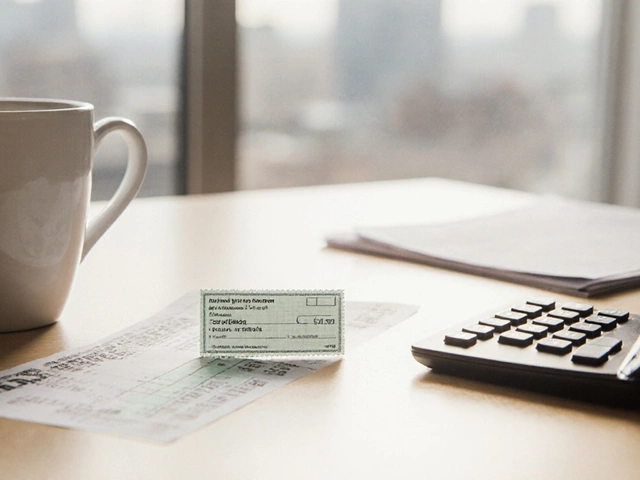
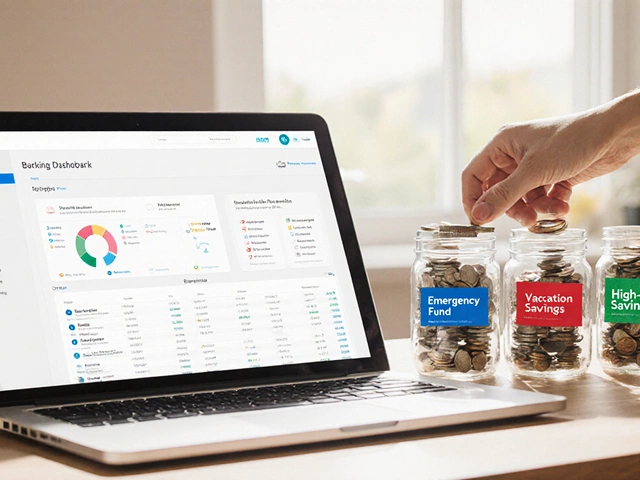


Write a comment